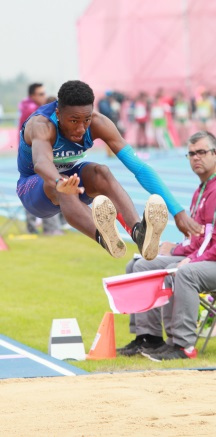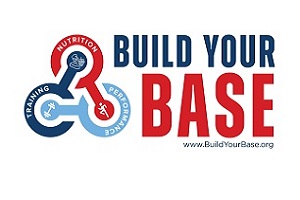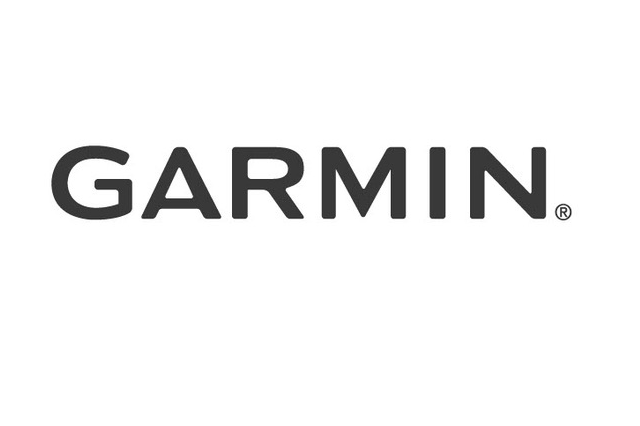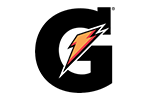2018 Youth Olympics: Adventures in changing money… and great competition
Day 2 in Buenos Aries
Photos by Joy Kamani
Changing Money
The current exchange rate here is about 37 Argentine pesos to $1.00 U.S. When travelling to other countries, the best rate is usually gotten when withdrawing from an ATM. This is apparently not the case here.
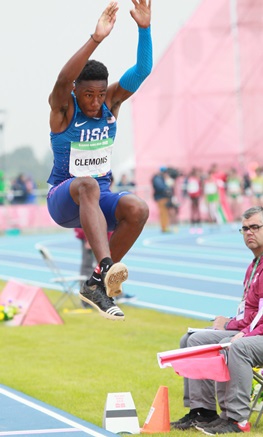
I did a bit of research and the internet (which is always reliable, as we all know) stated that using a bank to convert money was best. I found a Wells Fargo branch (on the internet) in Buenos Aires. Jackpot! I would just change dollars to pesos there with minimal fees.
So I went to the address stated. The building had a sign that stated something like “Department of Health.” I went to the lobby and asked the front desk person where the Wells Fargo bank was. She said, “It’s not here. And people come here all the time asking the same question. It’s not here and never has been here.”
On to Plan B (I have lots of Plan B’s and C’s available in situations like these). We (Joy Kamani and I) found a nearby bank and asked to change money. They said they didn’t change money there, but gave us an address of a bank about three blocks from there that would.
We walked to that location (Banco Piano). I gave the clerk my passport and $100.00. He made a copy of the passport and gave me back the $100 and a number. He directed us to the back of the bank to a waiting room. There were about 40 people there. There was a screen listing the number and which “cage” to go to. It was sort of like the Department of Motor Vehicles. I was number 86. When we got there, the current number was 71. After about 10 minutes it got up to 80. Then 81, 82, 83, 84, 85 … 87. After about two more tries it got to my 86.
I went to a cage behind closed doors and gave the clerk my $100 and the photo copy of my passport. She looked it over carefully, and then gave me a form to fill out with my name, address and other details. I filled it out. She took it back, compared it to my passport, and then looked at me carefully. Then she stamped it and attached it to my passport. Then she printed out and an agreement for me to sign with the conversion rate. I signed it, gave it back to her and she stapled it to some other paperwork, and then finally gave me my 3,550 pesos. So, after a half hour, I got my money!
The Competition
The only competition for U.S. athletes this day was the Men’s Long Jump qualifying. It was a very good field, led by Cuba’s Lester Lescay, coming in with a best of 26-05.75. Malcolm Clemons (St. Mary’s, Berkeley, CA) was to be in the mix, having a 24-11.75 best.
The early leader was Jason Tito (South Africa) with a jump of 24-11. Malcolm responded two jumps later with 24-02.75 to move into second. But the final jumper in round 1, Joshua Cowley (Australia), had a big PB, leaping 25-02.75 to take the lead. Malcolm improved to 24-05.75w in round 3 and eventually finished 5th overall. Meanwhile the favorite Lescay, well “out of the money” in his early jumps, got a big 25-01.25 in the final round (round 4) to move into second. (There are 4 rounds in each of the field events, and everyone gets 4 jumps).
Cowley (Australia, first) and Tito (South Africa, third) obviously had some advantage as they are in the early stages of their track season in the Southern Hemisphere. It has been difficult for Northern Hemisphere athletes as their season is mostly over in the summer. (On the other hand, Australians and South Africans always do well in world championships, which are held in the summer, so there are other factors at play here).
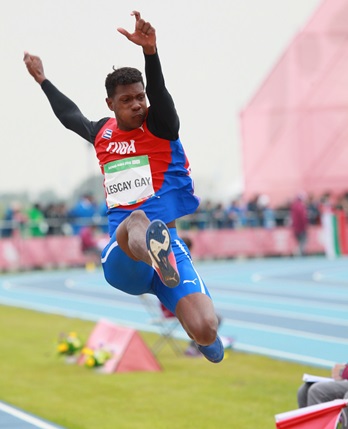
We spoke with Nick Ramey (Brookwood, Snellville, GA), who competed on our Team NSAF in the Bahamas this past June, about getting ready for this competition. He said that he had taken a month off in July-August (after he competed at the World Under-20s in Finland), then found out that he had made the U.S. team (he had some inkling that that might do so). He then picked up his training with his Flight 400 club Coach Andre Oliver, with the plan to “peak” in October. It was a masterful job by him and his coach, as he ran sub-48 in winning his heat on Thursday -- a controlled effort indicating he might challenge his 46.20 PR when he runs the final on Sunday. Nick, who we believe has a big future, has narrowed his college choices to Miami, LSU and USC.
The seven U.S. athletes have missed two weeks of school to be here. In all cases, they are excellent students and had arranged with their schools and teachers a plan for them to study while away. Of course, it has been a great situation for them and an outstanding educational opportunity.
I must say that Friday was a great day of competition. The stands were absolutely packed (probably 2000-3000 fans, mostly high school and elementary school kids). They were very supportive and enthusiastic. The whole layout, with acres and acres of competition venues, is special.
Besides the various stadia and competition sites, there are outdoor food courts with foods from various nations, as well as a large food truck “rodeo.” Several big companies, like Samsung and Coca Cola, have interactive booths (and buildings) to involve the kids. And there is always some kind of concert going on all day at an outdoor stage. It is certainly an exciting atmosphere.
